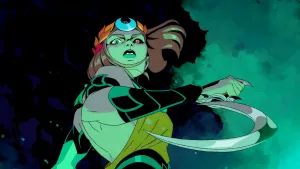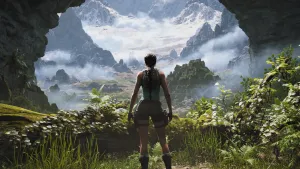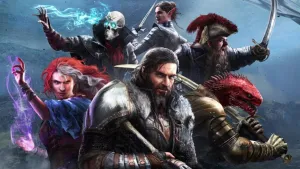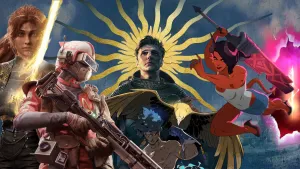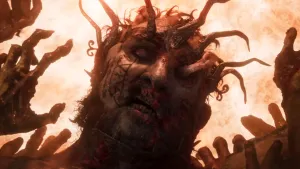We Talk To The Musicians Of MAG

Zipper Interactive's 256-player MAG is set to be released tonight at midnight, and gamers can expect to sink a great deal of time into the title if they wish to advance through the ranks. Considering how many hours will need to be invested, it would quickly become grating if the same music was being played time and time again. To keep things fresh, the developers enlisted the help of three different composers to handle each faction's tunes. Veteran gaming composer Sascha Dikiciyan is handling the music of the high-tech Raven squad, Finnish metal band Apocalyptica lends their harder sound to S.V.E.R., and Emmy-nominated composer Tree Adams is on Valor duty. We had a chance to speak with them recently:
MAG’s entire focus revolves around battles of immense scale. Did that affect the way you approached the composing process?
Sascha Dikiciyan (Raven): Well, I tried to stay away from the classic orchestra style and create something new which I would call the “Raven sound”. We also wanted to make each sound count, approaching it more like a ‘minimal’ score. With that many people playing and shooting at the same time, the last thing you want is to have a theme or a melody constantly screaming at the player. It’s more about to give the player the feeling of “oh this is cool” and “lets kick some ass” without applying that cliche guitar riff style yet still keeping it on an epic level, just like the game itself!
Perttu Kivilaakso of Apocalyptica (S.V.E.R.): We wanted to do quite harsh and brutal-sounding stuff for S.V.E.R. On the other side it appears with faster riffs played with lots of aggression and distortion that is rather disturbing than ear-pleasing. We wanted to make them sound unfriendly...and then we have this contrast with more quiet and creepy moods when the player is not involved with the battle. With these moods we tried to find new and strange sounds out of the cello, aiming to capture the horror-feel of the war more than towards the obvious tragedy and drama. We didn't intentionally want to do "as big as possible" music because the battle and picture itself are already bombastic, but the meaning of music in here was to support the anxiety of a single soldier, to make you feel uncomfortable.
Tree Adams (Valor): I’d say that the main focus was more on getting the right instrumentation and tone but there were, for lack of a better word, “filmic” techniques that I employed in order to imbue the pieces with some sprawl. For example, many of the cues have extra depth because there are several swatches of guitar feedback and various other organic textures draped across them. Also, many of the percussive elements were thickly layered so that rather than just hearing your basic John Bonham power sludge back beat, you’d get that same groove with a battery of Nagaras, Darbuka and goatnails laced in there. So, the end result has a bit of the epic battle feel to it but it still maintains that raw rock energy. The instrumentation chosen for the Valor faction was essentially a gritty rock core ensemble with the dobro as it’s centerpiece. So, somehow even if I had a legion of wardrums pummeling away, we still had to preserve the power of these little percussive acoustic slide licks.Throughout the whole project, I worked really closely with Keith Leary, the Sony PlayStation music manager and Ernest Johnson, the music editor and one of our biggest challenges was keeping the integrity of these elements in tact while addressing the massive scale of the environment. Over the course of the past year, it was kinda funny to watch people’s expressions when I told them that I was working on dobro battle music.
The
three factions in MAG all feature unique appearances and styles of
combat...what makes your faction's score specific to them?
Sascha: Well the Raven faction is rather high-tech and uses cutting-edge weaponry. We wanted to reflect that within the music as well. There are processed beats, filtered guitars, completely distorted bass lines among other things. To keep things cinematic I actually used some string/brass parts but in a rather unusual way. I wrote them, then sampled and triggered them just like a sampled sound.
Perttu: The sound of the cello is quite unique, although we use lots of effects and distortion - it is still quite natural sound, not synthetic or electric...and therefore it fits pretty nicely to the raw world of S.V.E.R that counts more into the strength of an individual soldier's than all the newest technology or latest updated weapons.
Tree: When Clint Bajakian and the team from Sony first came to my studio, they described the Valor faction to me as a kind of gritty squad with some organic overtones. I was told the music should have a raw, natural, earthy, energetic feel to complement the sound of aggressive warfare. Members of Valor are rugged and their equipment is grungy, dirty, and scratched. So, everyone seemed excited when I presented the idea of forming a band that could deliver some grit as the basis for the score. The core ensemble featured some incredible touring musicians from bands like Nine Inch Nails, Ozzy, and Beck. We rocked out...it was a blast. Though this was a combat score, which would rely heavily on driving percussion instruments from around the world, they wanted me to feature the slide guitar as the centerpiece, the dobro in particular. I did all the guitar stuff and created gritty swatches of feedback texture because that’s kinda my thing and we dialed in battle music that ran the gamut from Zeppelin-esque to filmic swamp-lurking to all out mayhem.

How did your work on
MAG differ from your other projects (film, television, albums)?
Sascha: Well the guys over at Sony, Ernest Johnson and Keith Leary, really let me do whatever I wanted. Once we had a style everyone liked they kinda just let me go with it. There where a few tracks before submitting them where I thought "oh man, way too crazy" but the response was “more”. I had other great experiences but this was one of those projects where it's nice to know that the people hired you for your own sound and not to create another well known movie clone. So a big thanks to everyone at Sony!
Perttu: It's simultaneously the same and different process...emotion and energy inside the music is same, but of course when you have to compose into a certain rhythm or for a specific timecode, it makes a big effect to the final result...music needs to serve the picture or the entire feeling of the product, while doing stuff for the album is more like closing the eyes and letting the music itself guide you through the entire journey. It is maybe even more challenging to find a correct approach to support the picture and other sound effects with the music the way it doesn't take too much attention but that it'd still bring some extra flavor and spice to the action.
Tree: This was my first foray into the video game music world and I really enjoyed some of the freedoms of the process. Keith Leary was like a sherpa guiding me safely through the mountains. It was interesting to have a clear construct of the environment and the scenario without a linear timeline or plot. In effect, the composer is given the world to be inspired by without having to deal with spotting. It requires a good deal of imagination at times as well. I mean if I’m asked to write a three-minute piece to accompany an enemy vehicle capture sequence, I am relying pretty heavily on an amalgam of my own vision and the direction I’m given in terms of mood and timing. It’s not like we all sit down to watch the scene in the end together and say “oh well, that section there where the car flips over before the helicopter lands isn’t working or we need more energy when the battle starts.” This all happens on a fairly cerebral plane at this point in the process, which in some ways actually demands more creativity than when working in film or television. I love changing mediums (film, TV, games etc.), I’d do it again in a heartbeat. I find that it always keeps my process from getting stale.

Get the Game Informer Print Edition!
Explore your favorite games in premium print format, delivered to your door.
- 10 issues per year
- Only $4.80 per issue
- Full digital magazine archive access
- Since 1991


